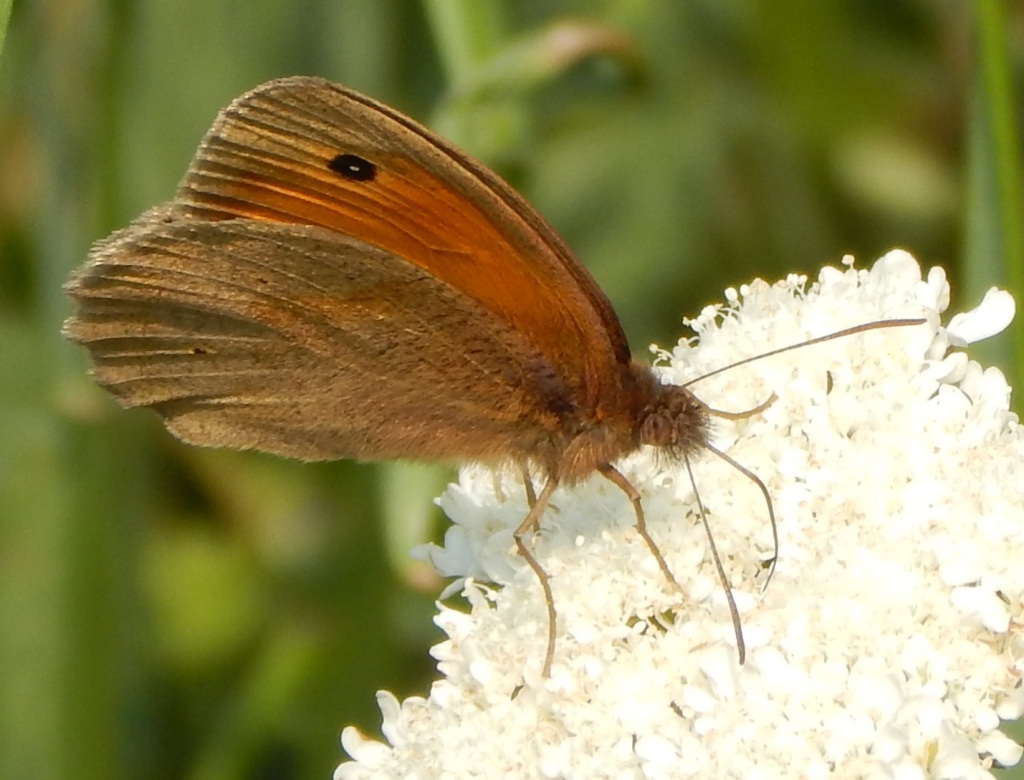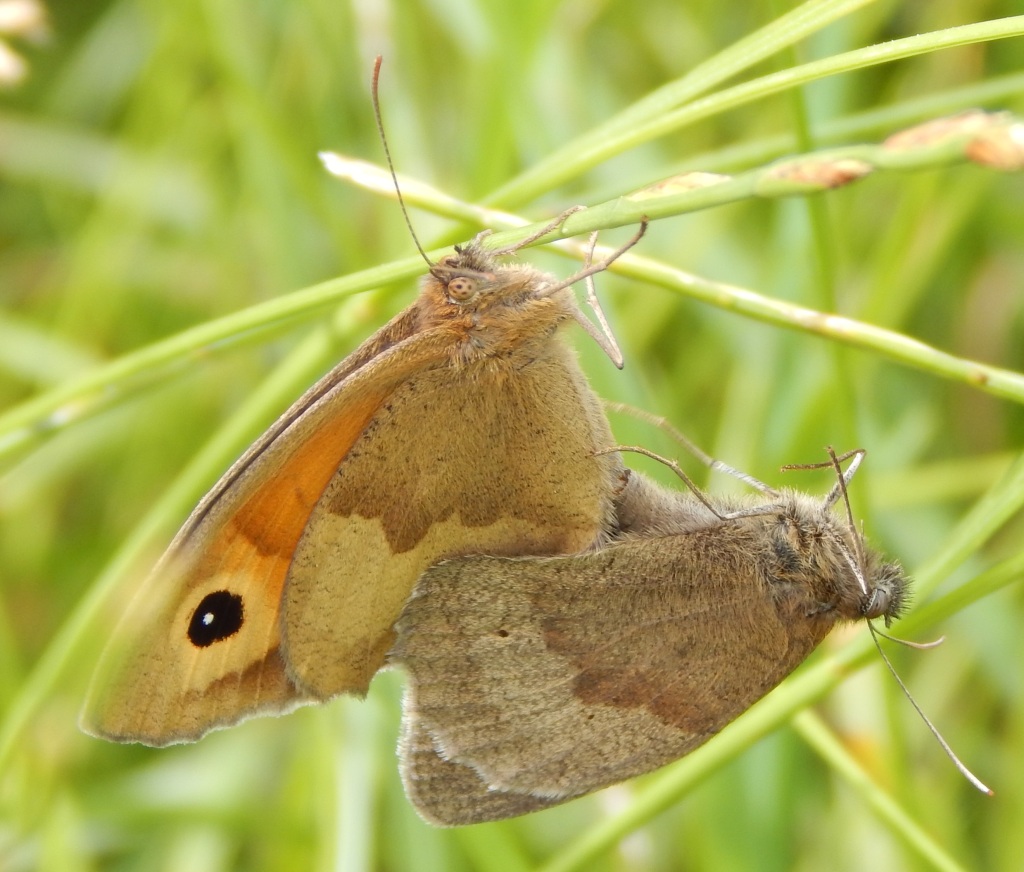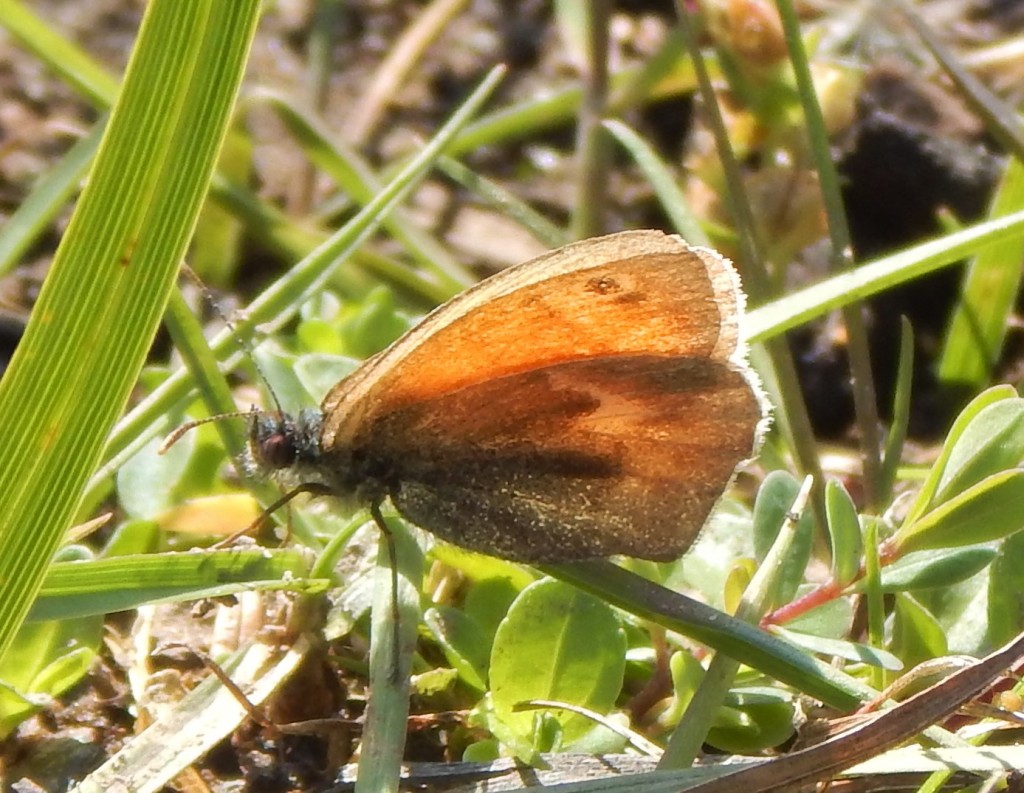
[222] Maniola jurtina, Meadow Brown
Introduction
Maniola jurtina, the Meadow Brown is one of several similar brown butterflies.
I will also look at Coenonympha pamphilus, Small Heath, which is similar but smaller,
Taxonomy
Kingdom – Animals
Phylum – Arthropods
Class – Insects
Order – Lepidoptera (Butterflies and Moths)
Family – Nymphalidae
Subfamily – Satyrinae (Browns)
Tribe – Satyrini
Subtribe – Maniolina
Genus – Maniola
Scientific Name – Maniola jurtina
When originally identified and named by Linnaeus, the male was named as Maniola janira and the female was Maniola jurtina.
Name
Meadow Brown is an obvious name.
Maniola is a diminutive of the Latin manes, the souls of the dead, probably because of its dark and gloomy colour. Jurtina is assumed to be an erroneous transcription of Juturna or Diuturna, the Roman goddess of fountains and springs.
Description
You will remember from [028] Ringlet, the tribe Satyrini, with hundreds of genera, including these three in the subtribe Maniolina, that are similar brown butterflies that are common in England.
- Ringlet, already covered
- [288] Gatekeeper, coming later
- Meadow Brown
They are all to some extent sexually dimorphic.
The Meadow Brown male is almost a complete dull brown with a small eye spot that is only visible when its wings are open. The female has a brighter orange area on her upper wings.




There is considerable variation in wing pattern and colour and the male may be a very dark, almost black colour. To be honest they are not much more impressive than the unexciting Ringlet.
They are not even obvious to tell apart when mating.



Another similar butterfly in the subtribe Coenonymphina is the Small Heath, Coenonympha pamphilus.



The Small Heath is very similar to the Meadow Brown but smaller. Its wing-span is about 35-40 cm compared to 50-55 for the Meadow Brown.
Without help from online sources I am not sure that I could identify either of these two species, or discern between males and females.
Habitat
Maniola jurtina and Coenonympha pamphilus are found over almost all of Europe, much of Asia and parts of North Africa. The caterpillars feed on a variety of species, mostly grasses, and adults also have a wide range of food sources. Both are found over the whole of the UK.
See also
There are some other less common similar species and [226] the Marbled White, also in the subtribe Melarnargiina, is coming soon, but does not look so similar.
The Gatekeeper, coming a lot later, is slightly more colourful.
